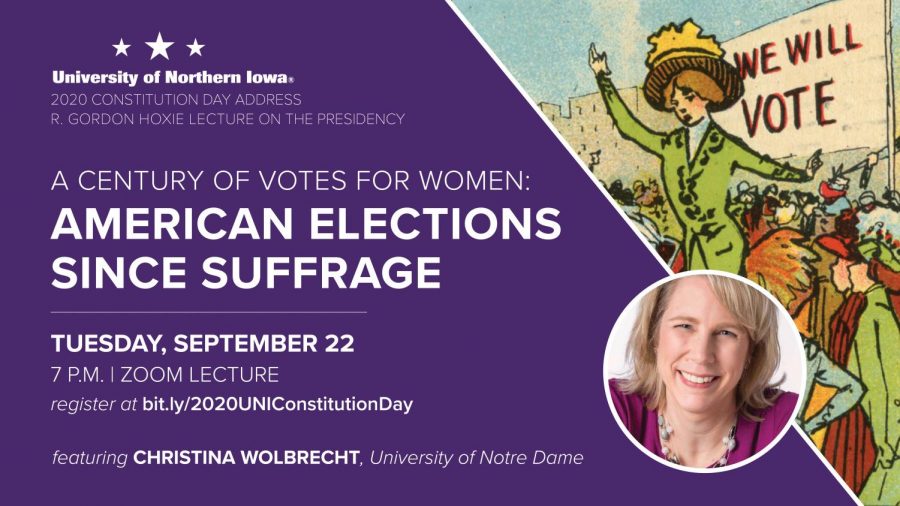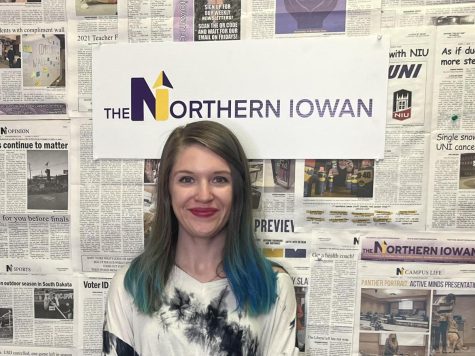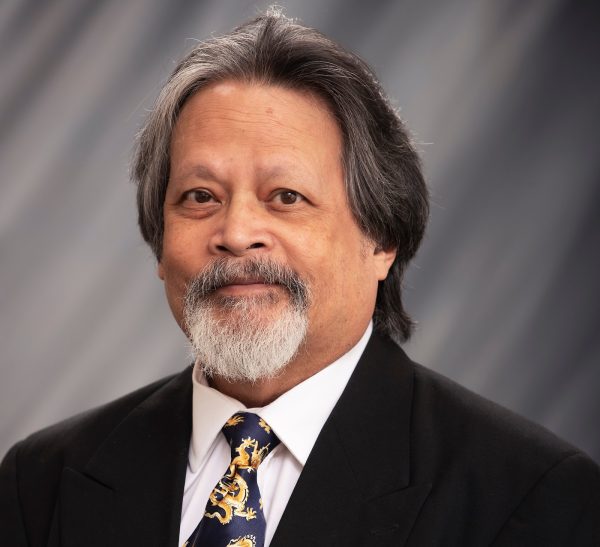Address discusses women’s suffrage
Professor Christina Wolbrecht hosts Zoom presentation annual Constitution Day Address over Zoom based on her new co-authored book “A Century of Votes for Women.”
Sep 24, 2020
On Tuesday, Sept. 22, UNI hosted its annual Constitution Day Address to celebrate the day the Constitution was signed: Sept. 17. The event was hosted by UNI Professor and Department Head of Political Science, Scott Peters. Peters introduced this year’s speaker, Professor Christina Wolbrecht from University of Notre Dame. Wolbrecht hosted a Zoom presentation based on her new co-authored book “A Century of Votes for Women: American Elections Since Suffrage.” The book along with her presentation specially focused on women voting since the Nineteenth Amendment was ratified.
Wolbrecht opened the Zoom presentation with a brief introduction of herself and her new book and then explained how the women gained the right to vote and how it changed America’s voting system. After the Nineteenth Amendment was ratified, everyone had the same question: what would women do with their right to vote? Many newspapers, politicians and even scholars agreed that women would simply vote whichever way their husband told them to. They were convinced that women knew nothing of politics and would simply pick the candidate their husband agreed with. With this new opinion, many newspapers began to question if the women’s suffrage movement was a failure, and surprisingly the scholars agreed.
Although the voting records from decades ago aren’t exact, it is certain that there was a huge gender gap between voting populations. Even though women were now legally allowed to vote, states had very low percentages of women voters. And while it was nowhere near as severe as the segregation African Americans faced pertaining to the right to vote, there were still many obstacles that women had to face in order to vote. A specific one being the date to register to vote was in January, specially the January before the Nineteenth Amendment was ratified. Wolbrecht showcases various graphs and charts showing women’s voting patterns from their first election until the most recent in 2016.
She explained how experts predicted that the 2016 election between Democratic nominee, Hillary Clinton, and the Republican nominee, Donald Trump, would have the largest gender gap in voting in years. However, that wasn’t the case at all. Wolbrecht explained that studies show in 2016, white women were more likely to vote for Trump, while women of color were more likely to vote for Hillary. Even though it was predicted more women would not be voting for Donald Trump, experts were mistaken.
Wolbrecht also explained that women and men without college degrees in 2016 were more likely to vote for a Republican candidate, while men and women with college degrees favored a Democratic candidate.
After the presentation, Wolbrecht answered questions from audience members, one of them being “What will women do in 2020?”
Wolbrecht answered the question with a simple sentence: “The past is always a good predictor of the future.”














